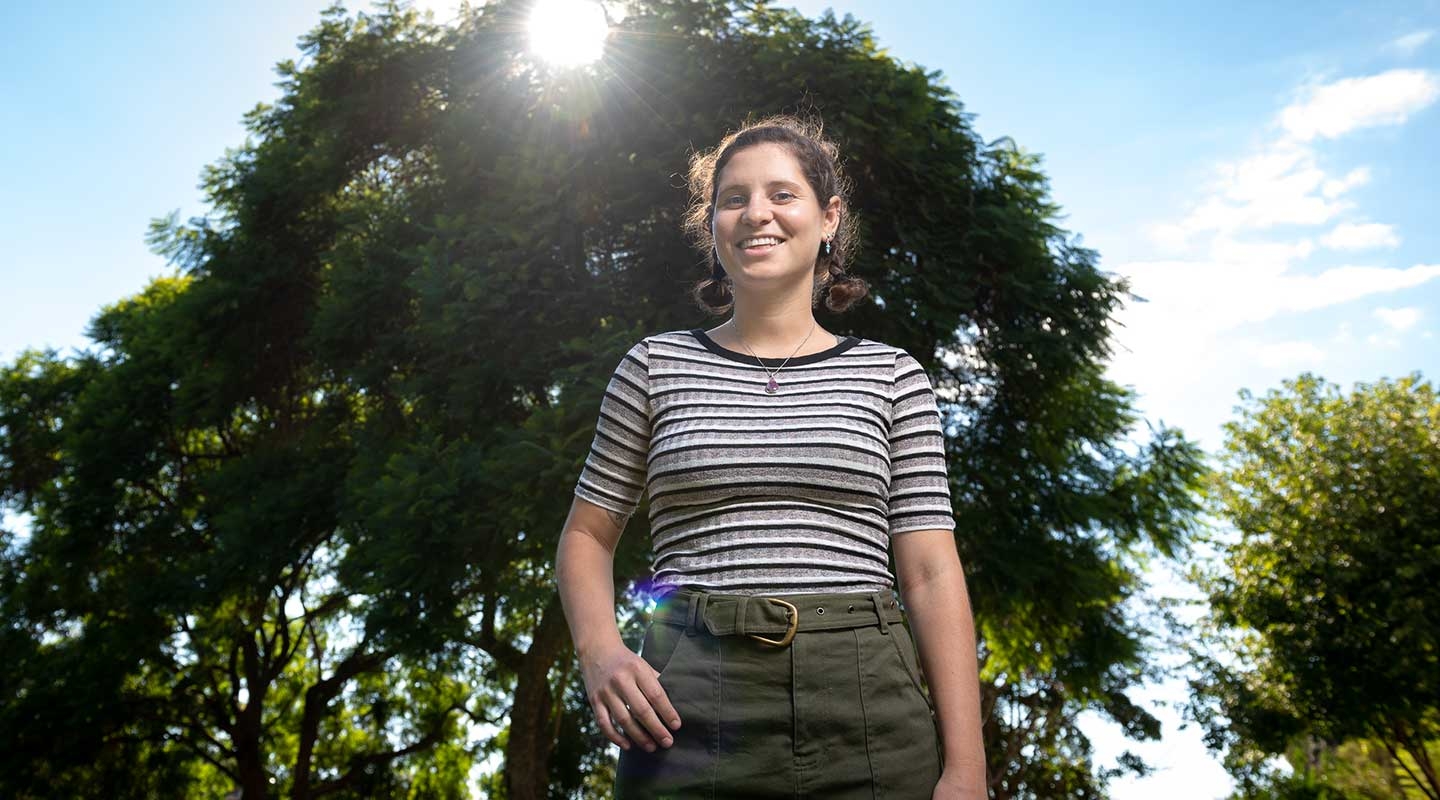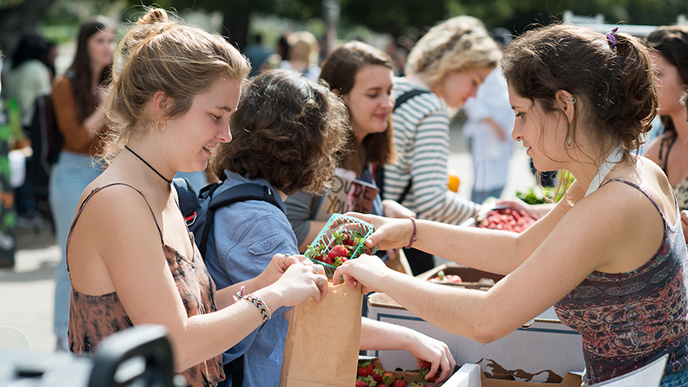Through efforts for environmentally sustainable change, biology major Sammy Herdman is leaving a green footprint on campus, all while building research skills at Oxy and afar.
With graduation only a semester away, Sammy talks about the initiatives she has collaborated on with departments across campus, and gives a view into a summer spent researching alongside professors in the remote Galapagos islands.
West Coast Roots
I'm from the Bay Area, just north of San Francisco. I wanted to go to a liberal arts school where I could get to know my professors really well, and I wanted to be somewhere warm, so coming to Occidental and Southern California seemed to fit. I arrived at Oxy thinking I was going to major in urban and environmental policy (UEP) because I have always been interested in sustainability. But when I got here, I took the time to talk to professors from the politics department, UEP, art history, biology and geology. I would come in for office hours and the discussion would turn to what I was thinking of majoring in. I met with some biology professors who made me realize that I’m really interested in animals and wanted to focus more on the biology aspect rather than the policy side of sustainability. Now I’m a biology major with an environmental science emphasis. There's so many resources on campus to help students find their niche. I spoke to other students, too, and everyone genuinely tries to help you find what you're interested in.
Sustaining Change
I have always liked being outside and as far back as high school, I knew I was interested in environmental sustainability. When I got to Oxy, it was the first thing I looked into. There was a opening in Campus Dining to be lead intern for sustainability, and that position only opens up every three or four years. Thanks to lucky timing, I got involved in that. I also applied for the Renewable Energy and Sustainability Fund (RESF), and those two things led me to find all of the other projects I am now working on.
This year with RESF, we're focusing a lot on how we can make sustainability more intersectional with other social issues by putting an emphasis on environmental justice rather than just sustainability. We're working with the Student-Labor Alliance to see if we could switch some of the chemicals that the custodial staff use to be more sustainable and also safer. There’s also a project underway focusing on food security on campus. Within Campus Dining I've worked to switch some of the campus dining appliances over to more energy-efficient models, and we try to reduce the use of single-use plastics like water bottles and food containers, so for instance the Eco-Clamshell Program was an idea presented by interns. There’s a wide range of projects in the works.
Sammy Herdman (right) at Oxy's Harvest Fest in 2016. Photos by Marc Campos
Campus Dining is such a great department to work in. You get a lot of professional experience, and it’s a very independent role. In terms of sustainability, interns do an annual analysis of all the food the College purchases. We use nationally-recognized sustainability metrics that are posted by the Real Food Challenge and we go through all the food we've purchased for two months of the year and mark which ones are sustainable. Our goal is to purchase 30 percent sustainable food by 2020. In Spring 2018 we were at 26 percent, so we're nearing our goal.
A lot of the student body may not know these projects are happening. It takes so much work to make small steps because there are a lot of bureaucratic decisions and logistics that need to be in place first. It’s all done behind the scenes and there's a whole network of sustainability leaders that are working together—sometimes paid, sometimes voluntarily—and leading their own projects. It's really cool.
Research Takes Flight
I didn't get a chance to study abroad during my junior year, so I wanted to travel somewhere and get research experience over the summer. My research adviser, professor Amanda Zellmer, helped me through the process of applying for a Richter Scholarship to make this possible. I went to the Galapagos Islands to study four species of mockingbirds, their distribution, microbiome and behavioral traits. I was catching birds and taking swabs, learning how to mist net (a common way to catch birds is to put a big net out). The first part of my time there I would wake up at 4:30 a.m. and meet up with two other student researchers from Ecuador, and we'd mist net and try to catch and survey whatever birds we could. Later in the program, Amanda and professor John McCormack came to the Galapagos, and along with a couple of other professors from different universities we would go camping on different islands to continue our research.
Urban Wilderness
When I pictured myself studying biology or looking at nature I always thought I would be somewhere remote, in a national park or rural area. But being in Los Angeles is definitely a better place to look at environmental sustainability and the effects of urbanization and anthropogenic disturbances. For example, I went on a field trip to Tujunga Wash, which is just 20 minutes away, and we studied how the scrub species adapt to nearby development like the adjacent golf course, which is a large source of fertilizers. Los Angeles is just such an interesting mix of urban and natural environments.


